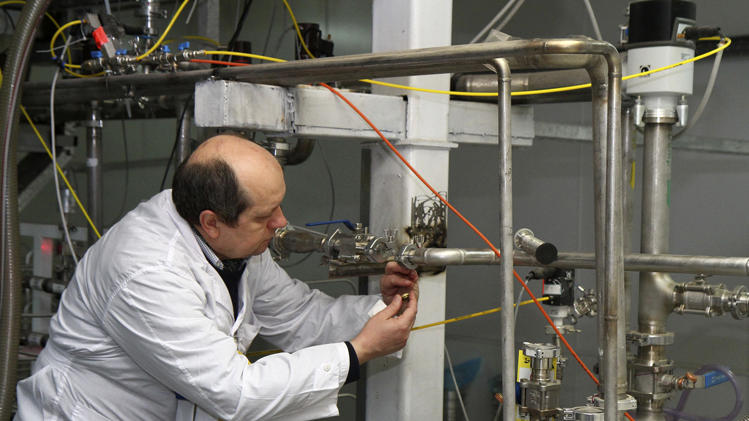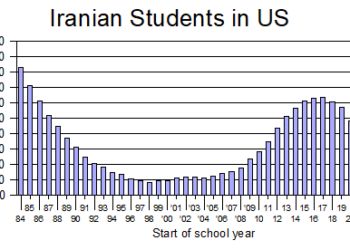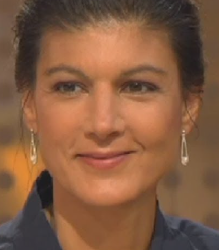January 24-2014

Without any hitches, the interim nuclear agreement between the Big Six and Iran went into effect Monday.
That very same day, Iran’s participation in a conference on Syria was blowing up publicly and messily. (See lead story above.) If the Syrian conference was an example of an ugly diplomatic bust, the start of the nuclear agreement was the exact opposite.
Many journalists couldn’t understand how relations with Iran could go so smoothly on one front while ending in a gigantic smashup on another front the very same day. US diplomats told reporters the State Department was being very careful to segregate the different issues in Iran-US relations and to keep the nuclear topic separate from human rights, Syria, terrorism and other topics.
Officials indicated they see an opportunity to make progress on the nuclear front and apparently fear poisoning the atmosphere if they link it to other touchy topics. That has infuriated the wife of Saeed Abedini, an Iranian-American Christian minister imprisoned in Tehran whose freedom Washington will not tie to the nuclear talks.
The smooth start to the nuclear agreement seemed to reassure the Iranian public. The rial improved slightly, a sure mark of public confidence. The dollar had been going for 29,600 to 29,900 rials in the several days before the start of the agreement. On Tuesday, it sold for 29,200 rials, the best rate in a long time.
The agreement was put into place when inspectors from the International Atomic Energy Agency (IAEA) reported Monday that Iran had carried out all the steps it was required to do:
• It stopped all enrichment above 5 percent.
• It stood by as the IAEA inspectors disconnected the links between cascades of centrifuges that allowed Iran to efficiently enrich to 20 percent and put IAEA seals on the equipment.
• It had not installed any new centrifuges since November 14 and it has not fed uranium into any centrifuges that were not spinning as of then.
• It had begun diluting half of its stockpile of 20 percent enriched uranium to reduce it to 5 percent—a process that is to be completed within three months.
• It started the process of converting the other half to oxide, which will make that uranium unsuitable for weapons but suitable for use as fuel in the Tehran Research Reactor. That process is to continue throughout the six-month life of the agreement.
When the IAEA communicated all that to Europe, the EU foreign ministers were holding their regular monthly meeting in Brussels. They promptly adopted a series of legal measures modifying EU sanctions for six months.
When Washington got the notification, it acted similarly. The Departments of State and Treasury issued a nine-page “guidance” paper explaining just how US sanctions have now been modified.
One part was narrower than had been anticipated. That part allows Iran to buy spare parts for its Boeing passenger planes. The guidance says that any orders must not only be placed by Iran before the six-month duration of the agreement expires July 20 but must also be completed by then. In other words, no orders can be shipped after July 20, so Iran must get its orders in quickly.
Another part, however, was much looser than anticipated. That provision said Iranian oil can now be carried on tankers owned by the National Iranian Tanker Co. (NITC) without any purchasers facing sanctions. But the guidance emphasized that sanctions will still be imposed to enforce limits on the purchase of Iranian oil so that Iran will not be able to sell more than the 1.1 million barrels a day it sold in 2013.
Iran will be allowed to sell petrochemicals without facing sanctions. To allow that, the United States listed 14 Iranian petrochemical companies from which it is now lifting sanctions for six months.
The United States emphasized that the bulk of its sanctions will remain in place, such as the restrictions on banking transactions involving Iran. But the guidance says Washington will lift its ban on “correspondent or payable-through accounts” to allow payments to go through the US banking system for those items like petrochemicals, automotive gear and airplane parts where sanctions are being lifted and even for crude oil purchases.
These sanctions are lifted only for transactions conducted by “non-US persons.” No business is allowed by “US persons.” That term encompasses essentially anyone living in the United States and thus coming under US law—citizens, green card holders, foreign students, refugees, asylum-seekers.
The IAEA is planning to double the number of its inspectors assigned to Iran so they can carry out more intense inspections with, for example, daily visits to the enrichment plants in Natanz and Fordo.
But the question of Iran’s past nuclear activities—back when most intelligence agencies believe Iran was working actively to build nuclear weapons—remains up in the air. The IAEA is in charge of that aspect and is still trying to negotiate for access to people, documentation and sites that can show what all Iran was doing in the past.
The next step is to start the negotiations for a permanent agreement to replace the six-month interim accord. The first meeting on that front is expected next month.
Everyone seemed happy with the smooth process on Monday—except for hardliners in Tehran. Vatan-e Emruz, a conservative daily, ran a story falsely saying that the deal brings to a halt most of Iran’s nuclear work. It ran the story under the headline: “Nuclear holocaust.”


















